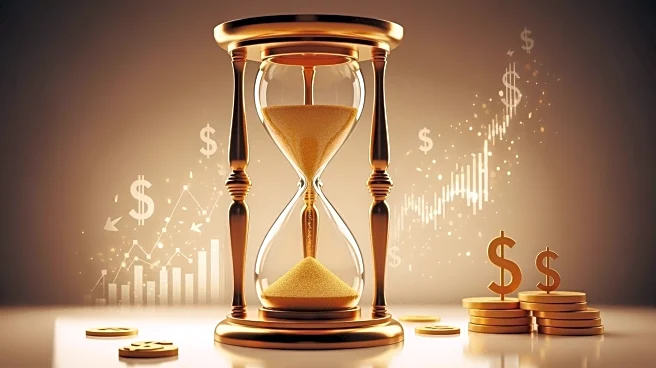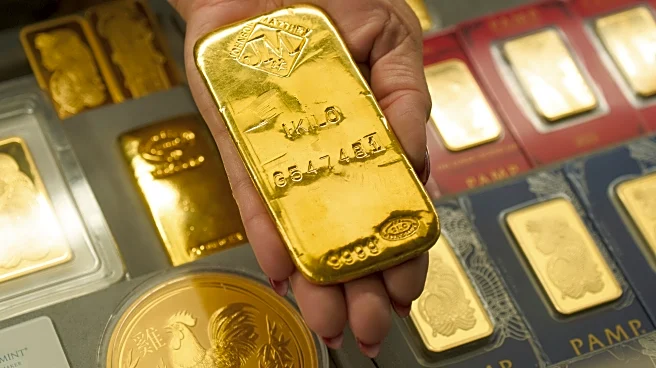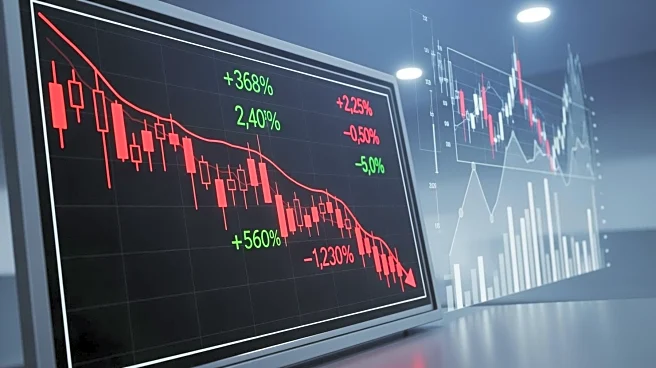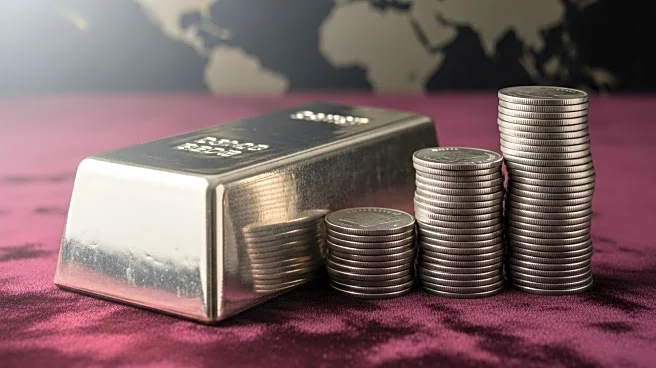What's Happening?
HSBC has forecasted that gold prices could reach as high as $5,000 per ounce by the first half of 2026. This prediction comes as spot gold prices recently surpassed the $4,300 mark, marking the strongest
week for gold since December 2008. The surge in gold prices is attributed to a combination of geopolitical tensions, robust central bank purchases, increased exchange-traded-fund inflows, and expectations of U.S. interest rate cuts. Additionally, tariff-related economic uncertainties have contributed to the rising demand for gold as a safe haven asset. HSBC has also adjusted its average gold price forecasts for 2025 and 2026, citing factors such as geopolitical risks, economic policy uncertainty, and rising public debt as key drivers.
Why It's Important?
The potential rise in gold prices to $5,000 per ounce could have significant implications for various stakeholders in the U.S. economy. Investors may view gold as a more attractive asset, leading to increased investment in gold-related financial products. This could impact the stock market and other investment vehicles as funds shift towards gold. Additionally, the rise in gold prices reflects broader economic uncertainties, including geopolitical tensions and economic policy challenges, which could influence U.S. economic stability and growth. Industries reliant on gold, such as jewelry and electronics, may face increased costs, potentially affecting pricing and consumer demand.
What's Next?
As gold prices continue to rise, market participants will likely monitor central bank policies, geopolitical developments, and economic indicators closely. The potential for further U.S. interest rate cuts could influence gold's appeal as an investment. Additionally, the entry of new market participants into the gold space may sustain demand, even after the current rally subsides. Analysts and investors will be watching for any signs of volatility or price moderation in the latter half of 2026, as predicted by HSBC.
Beyond the Headlines
The sustained interest in gold as a safe haven asset highlights broader concerns about global economic stability and the effectiveness of current economic policies. The diversification benefits of gold may attract long-term investors seeking to hedge against potential market downturns. This trend could lead to a reevaluation of investment strategies and asset allocations across various sectors.












